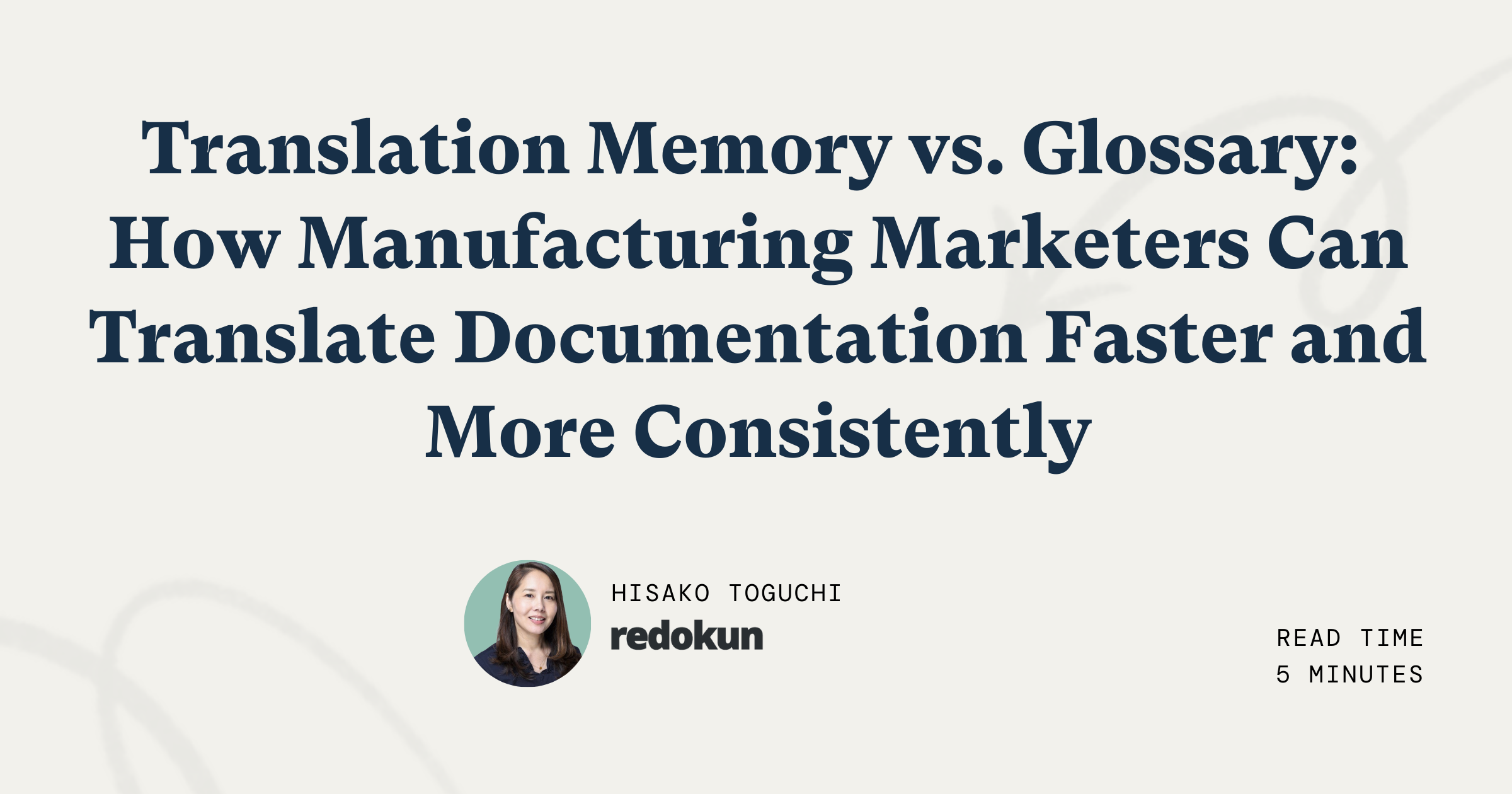If you’re responsible for translating manufacturing manuals, technical documentation, or product guides regularly, you’ve likely heard of translation memory (TM) and glossaries. Both are critical tools you will find in translation management systems to help you translate faster, more accurately, and more consistently—but they serve very different purposes.
In this article, we’ll explain:
- What translation memory is
- What a glossary is
- The key difference between the two
- How they work together (and with AI)
- Why both are essential for manufacturing marketers with regular translation needs
Translation Memory Explained: Definition, Examples, and Benefits for Manufacturers
A translation memory is a database that stores previously translated segments (sentences, phrases, or paragraphs).
- How it works: Every time content is translated, the system saves the source text alongside its approved translation. When translating new content, the TM suggests matches from past translations—whether exact matches or partial (fuzzy) matches.
- Why it matters for manufacturing: Technical documentation and manuals often contain repetitive instructions (“Tighten the screw,” “Refer to the safety guidelines,” etc.). With TM, you never re-translate the same sentence twice, saving time and cutting costs.
- Key benefit: Consistency across long and technical documents, plus reduced translation costs.
Glossary in Translation: Why It’s Essential for Technical Manuals and Product Guides
A glossary (or termbase) is a collection of approved translations for specific terms and phrases, such as product names, industry terminology, and branded language.
- How it works: A source term (e.g., “unit”) is paired with its approved translation in the target language (e.g., “module” in French). The glossary automatically flags or suggests the correct translation whenever that term appears.
- Why it matters for manufacturing: Product terms, part names, or safety terminology must be translated consistently every time across manuals, guides, websites, and marketing materials.
- Key benefit: Accuracy and brand consistency, even when multiple translators or AI tools are involved.
Translation Memory vs Glossary: The Key Difference
Think of TM and glossary as two different layers of translation support:
- Translation memory = full sentences or segments
- Glossary = individual words or terms
There’s also a difference in how they operate:
- Translation memory works based on previous translations. It can only suggest what has already been translated before.
- Glossary sets the standard upfront. Translators and AI know the correct term from the start, without needing to refer to past work.
Both work together to create reliable, scalable translations:
- TM keeps repetitive instructions and technical explanations consistent.
- Glossary ensures your key product terms and brand language remain unified across documents and markets.
How AI Translation Works with Translation Memory and Glossary
If you use a translation management platform like Redokun, AI translation tools (such as ChatGPT, DeepL, or Google Translate) can integrate seamlessly with both TM and glossary:
- AI translation + TM: Draft translations are automatically aligned with past approved content, cutting down repetitive work.
- AI translation + Glossary: AI-generated translations respect your approved terminology, reducing the risk of incorrect product names or branding.
For manufacturing marketers, this means your draft translations start out consistent with both your past work and your approved terminology, helping you stay in control of quality and accuracy from the very beginning.
How to Improve Technical Manual Translations with Translation Memory and Glossary
Relying on only one tool is risky:
- With just TM, product names and technical terms may vary across documents.
- With just a glossary, repetitive sentences still need to be re-translated manually.
Together, translation memory and glossary give manufacturing marketers:
- Speed → No wasted effort on repeated instructions
- Accuracy → Technical terms are always correct
- Consistency → Product and brand language remain unified globally
- Scalability → Easier to manage growing translation demands as your company expands
Learn how Redokun helps you translate documents faster.
Conclusion
For manufacturing marketers translating manuals, technical documentation, and product guides, translation memory and glossary are essential tools—not optional extras.
- Translation memory saves time and reduces costs by reusing past translations.
- Glossaries ensure your technical terms and product names are always accurate and consistent.
When combined in a translation management platform like Redokun, and powered by AI translation, they transform your workflow into a faster, more reliable, and scalable process that supports global growth.
👉 Need to speed up your translation process? See how Redokun can help you translate your manufacturing documents faster and more consistently. Start your free trial today.



